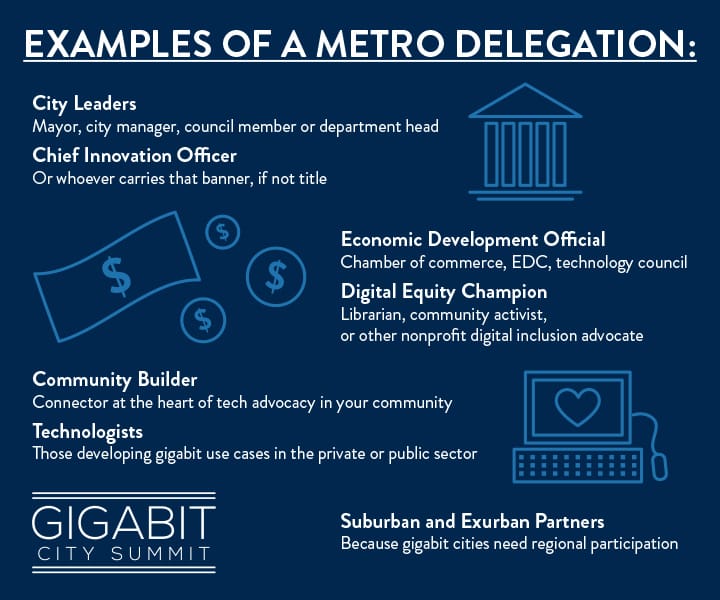Gigabit City Summit, One of the First Promoting Fiber Connectivity, Meets in Kansas City
BROADBAND BREAKFAST INSIGHT: One of the first groups to begin the movement toward a Gigabit City, KC Digital Drive, prepares for its Gigabit City Summit next week in Kansas City. Take advantage of opportunities to learn about how your city can benefit from fiber-optic connectivity! Why a Gigabit Cit

BROADBAND BREAKFAST INSIGHT: One of the first groups to begin the movement toward a Gigabit City, KC Digital Drive, prepares for its Gigabit City Summit next week in Kansas City. Take advantage of opportunities to learn about how your city can benefit from fiber-optic connectivity!
Why a Gigabit City Summit?, by Gigabit City Summit
The population of colonial America at the time of the Revolutionary War was between 2 and 3 million people—roughly the size of metro Kansas City today. Outside of New York and Los Angeles, the rest of the top 100 US metro areas by population are in the range of a half million to less than 10 million people—six- and seven-figure populations. Those numbers are remarkably modest compared to the nine- and ten-figure populations that the world’s national governments are charged with managing and protecting.
It is hard to talk about the importance of cities these days without sounding trite or slipping into cliché. We’ve all heard that 70 percent of people will be living in cities by 2050, that cities draw the “creative class” and house “innovation hubs” that foster collision density and serendipitous connections. We lament the growing financial burden cities bear, while lauding local as the place where “things get done” and innovation is alive.
The dialogue around and exploration of these issues facing the city of today and the city of tomorrow is an important one. The invocation of the American revolution is not so much intended to recall conflict and tyranny, but the opportunity for fundamental definition of principles—of what a society believes, of what the people stand for, and of how they create the rules and institutions to realize a polis based on those beliefs.
Such is the opportunity for today’s cities, and it is called into stark relief by the digitization of infrastructure. Whether through fiber deployments to expand capacity for connectivity and data traffic or the application of sensors and real-time computing to the roads, buildings, pipes, and wires that enable modern life, cities (and the communities in between) are in the midst of a fundamental transformation. Unlike much of the consumer software revolution, these infrastructure projects deploy slowly and at great collective expense. The magnitude of the investment and the long infrastructure life cycles create an opportunity and an imperative—the opportunity for fundamental redesign and improvement and the imperative that they be well-considered and executed.
Over the past several years, the conversation around smart cities has evolved to include and even prioritize the role of actual human beings in the smart city loop. To those new to that conversation or unfamiliar with the history of “smart cities,” it may come as a surprise that such an evolution was even necessary. The idea that technology projects need to focus on meeting the needs of actual people ought to be obvious of course, but the challenges in making that a reality are more complex than might be imagined at first blush. These are precisely the challenges that our first gigabit cities have found themselves faced with—not simply how we build new infrastructure and deploy new technology, but how do we build the systems to apply those assets in the right way.
[more…]
Source: Vision – Gigabit City Summit










Member discussion